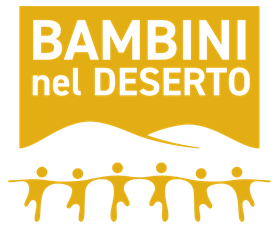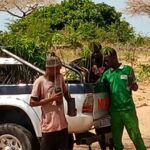The Forest of Joy: a project of environmental and social rebirth
The Forest of Joy is a project born from the initiative of Alessia Posca and Eric Staltari, founders of the Elefanteveg brand and authors, who wanted to transform the commitment of their community into a concrete action for the protection of the planet. The central idea of this project is the creation of a forest that not only symbolizes the beauty and power of nature, but that acts as a real bulwark against global challenges such as global warming and desertification.
Project objectives and impacts
The primary objective of the project was to create a forest composed of native trees of different species, carefully chosen to perfectly adapt to the local climate and soil.
These trees, planted in the Diender community in Senegal, play a crucial role in combating global warming.
Through their ability to absorb CO2, they help reduce the impact of greenhouse gases in the atmosphere, while also offering an effective weapon against desertification that threatens increasingly large areas of the planet.
Support for the local community and female entrepreneurship
One of the most innovative and significant aspects of the Forest of Joy is the attention dedicated to social, as well as environmental, sustainability. Thanks to the donations collected, the project was able to finance female entrepreneurship in the agri-food sector, creating new jobs for women in the local community. This approach has not only provided a means of livelihood for many families, but has also strengthened the economic autonomy of women, encouraging the development of skills and knowledge that can be passed on to future generations.
A symbol of hope and global awareness
Every tree planted in the Forest of Joy is a symbol of hope for a more sustainable future and for a humanity more aware of environmental challenges. This project embodies the essence of the activities of Children in the Desert in the field of environmental protection, combining the fight against climate change with the improvement of the living conditions of local communities. The choice to create this forest in Senegal, where the effects of global warming are particularly evident, underlines the importance of acting promptly to protect the most vulnerable ecosystems.
Diender, Senegal: a territory in rebirth
The Forest of Joy has found its place of realization in Diender, a Senegalese community that can now count on a precious ally in the fight against desertification and environmental degradation.
This project not only contributes to reinvigorating the territory from an ecological point of view, but also promotes sustainable development that actively involves local inhabitants.
Diender thus becomes an example of how an environmental initiative can transform into a source of economic and social renewal, in line with the sustainable development goals promoted by the United Nations Agenda 2030.
A future of growth and prosperity
The Forest of Joy represents a starting point for many other similar initiatives, capable of combining environmental protection with the improvement of living conditions of the most vulnerable communities.
Thanks to the vision of Alessia Posca and Eric Staltari, and the support of those who believed in this project, the Forest of Joy will continue to grow, offering a tangible contribution to the fight against climate change and to the construction of a more equitable and sustainable future for all.x

